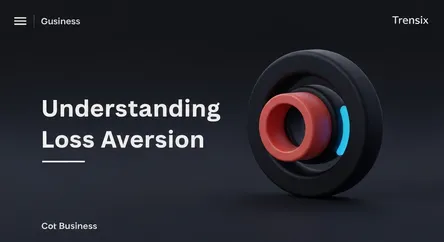Business
Understanding Loss Aversion

Discover Loss Aversion, the cognitive bias where the pain of losing is twice as powerful as the pleasure of gaining. Learn how it impacts decisions.
What is it?
Loss Aversion is a key concept in behavioral economics, first identified by psychologists Daniel Kahneman and Amos Tversky. It describes our tendency to prefer avoiding losses to acquiring equivalent gains. In simple terms, the psychological pain of losing something is about twice as powerful as the pleasure of gaining the exact same thing. For example, the distress you'd feel from losing $100 is significantly greater than the happiness you'd feel from finding $100. This cognitive bias can lead to seemingly irrational decision-making, as we are hardwired to protect what we already have, even if it means missing out on potential opportunities for growth.
Why is it trending?
In an era of economic uncertainty and volatile markets, understanding Loss Aversion has become crucial. Financial analysts and investors use it to explain market behaviors, such as why people might sell winning stocks too early to lock in gains but hold onto losing stocks for too long, hoping they'll recover. Marketers also leverage this bias through tactics like limited-time offers and free trials that are about to expire, creating a sense of urgency and a fear of 'losing out' on a deal, which powerfully motivates consumers to act.
How does it affect people?
Loss Aversion significantly impacts personal finance and everyday choices. It can make individuals overly cautious, causing them to choose lower-return investments like savings accounts over potentially more lucrative stocks to avoid the risk of loss. It's also the reason people may hold onto underperforming assets, a behavior known as the 'sunk cost fallacy,' because selling would mean realizing a loss. In consumer behavior, it can lead to brand loyalty driven more by the fear of a bad experience with a new product than by genuine satisfaction with the current one. Recognizing this bias is the first step toward making more rational and objective decisions.